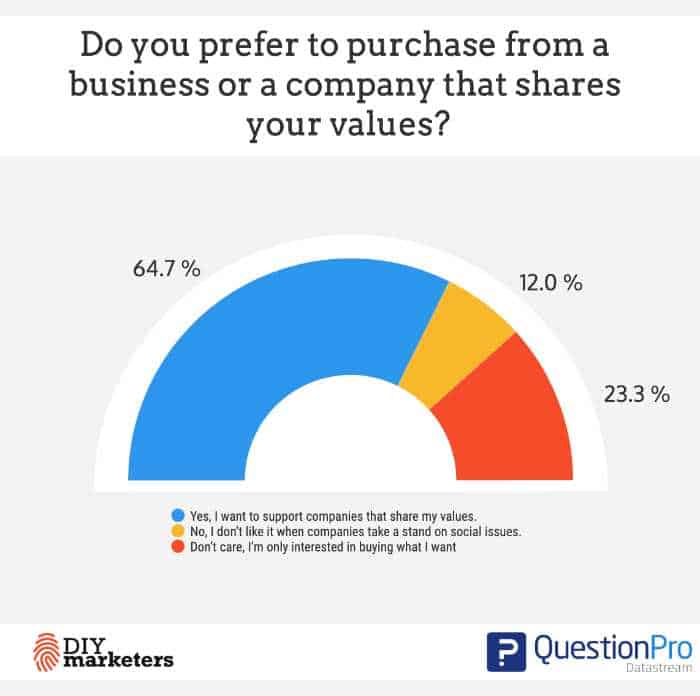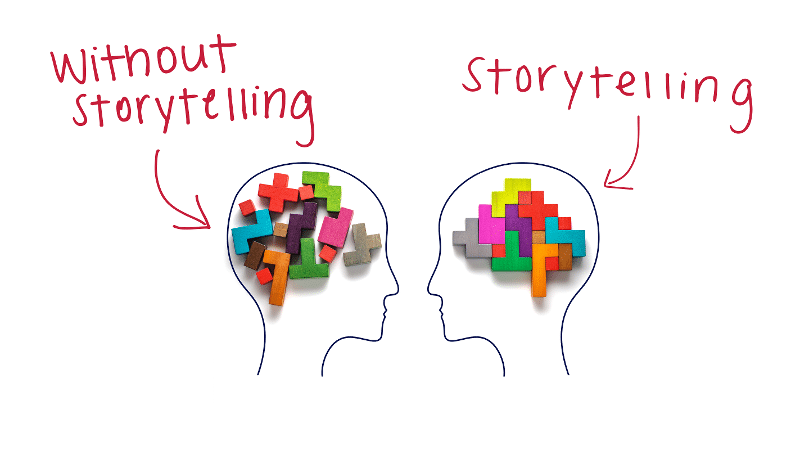
The Best Example You Will Find On The Value Of Storytelling
It’s 2024, and the mantra still rings true: “We’re here to sell stuff.”
That line? Heard it a million times.
But the real magic in marketing isn’t just in the “sell”. It’s in the story. And we’ve seen this magic work wonders, time and again, across various roles and companies.
Let’s take a moment and travel back in time to 2015. Skinny jeans were still a socially acceptable style choice. And Michele Miller was still the head of content strategy at eBay Enterprise. It was then that Michele shared an idea that still sticks with us (almost 10 years later) at Marketing Insider Group – the “Significant Objects” project.
To this day, the project still stands as a clear example of storytelling’s power, not just in theory, but in action. It’s a lesson in the tangible value of storytelling over the usual hard sell tactics.
So, we’re diving back into the storytelling saga and exploring how those lessons from the “Significant Objects” project are more relevant than ever in today’s marketing world. Because remember, storytelling continues to be a pivotal force, transforming how we connect, engage, and, yes, sell.
Quick Takeaways
- Storytelling in marketing is about creating resonating experiences by sharing the brand’s values, personality, and experiences.
- Storytelling powerfully influences consumer behavior, with a significant emphasis on values alignment, transparency, and trust, leading to stronger customer connections.
- Avoid overwhelming audiences with data and jargon. Instead, use relatable language and storytelling to show the real-life impact of products or services.
- Shift from focusing on the product’s features to highlighting the possibilities it creates for customers, using authentic stories and diverse content formats to engage and build trust.
What Is Storytelling?
Let’s get back to basics for a second. Storytelling – it sounds like a no-brainer, but it’s more than just spinning a yarn or telling a tale. It’s the heartbeat of effective marketing. So, what exactly is it?
At its core, storytelling is about sharing experiences, emotions, and ideas through narratives that engage and connect your audience. It’s the art of painting pictures with words, where the brushstrokes are your brand’s:
- Values
- Personality
- Experiences
It’s not only about what you say; it’s about how you say it. Good storytelling is a dance between the content and its delivery. It could be a compelling blog post, a heart-tugging video, a witty tweet, or even a well-crafted ad. It’s about creating an experience that resonates with your audience.
Video Source: BrandStorytelling.tv
Now, why should we, as marketers, care? Simple. Stories are the VIP tickets to your audience’s hearts and minds. They build connections, evoke emotions, and most importantly, they’re memorable. In a world bombarded with information, a good story stands out.
Storytelling and Consumer Behavior
Storytelling deeply influences consumer behavior. It’s not just about selling; it’s about connecting, and here’s why.
Values Matter – A Lot
We’ve seen a significant shift in what drives consumers to hit that ‘buy’ button. It turns out, about 64.7% of customers prefer to purchase from companies whose values echo their own.

Image Source: DIY Marketers
Think about it. When a brand’s story mirrors what we believe in, it’s like finding a kindred spirit in a sea of faceless companies.
The Younger Crowd – They’re Watching
Especially noteworthy is how younger consumers, those trendsetting millennials, are leading this charge. A staggering 83% of them are drawn to brands that share their values. Brands that get this, and get it right, are not just selling a product; they’re championing a cause, a belief, a way of life.
Transparent Storytelling – The New Normal
Then there’s transparency. Gone are the days when brands could hide behind glossy ads. Today, 86% of Americans are saying, “Show us who you really are.” They want brands that are transparent and honest. This is where storytelling shines. It’s not just a marketing tool; it’s a truth-telling platform.
Trust Is King
Moreover, trust isn’t just a nice-to-have; it’s essential. About 81% of customers say they need to trust a brand to buy from it. Storytelling isn’t just about making your brand look good. It’s about being good and being real.
Significant Objects: Proof the of Value of Storytelling
What happens when you hire creative writers to make up stories about cheap trinkets, and they post these stories, along with the items online for sale? This was exactly what Rob Walker and Joshua Glenn did back in 2009, as part of their storytelling experiment.
Significant Objects is a literary and anthropological experiment devised by Rob Walker and Joshua Glenn, demonstrating that the effect of narrative on any given object’s subjective value can be measured objectively.
Rob and Joshua asked 100 creative writers to invent stories about $129 worth of items, then sell them on eBay to see if the stories enhanced the value of the objects being sold. In case you were wondering how the experiment went: The net profit was $3.6 million. A 2,700% increase in final markup. Yes, you read that right.
The hypothesis was that stories are a driver of emotional value, and can transform insignificant objects into significant ones.

Image Source: Significant Objects
Take the globe paperweight pictured above for example. It was originally bought for $1.49, but was later sold at $197.50. Why? Because the stories in the handwritten note that came with the globe resonated with the buyer. This insignificant object became highly significant to someone else.
The experiment proves that we, as human beings, are drawn to and connect with stories. We feel stories. Data and statistics, on the other hand? Not so much.
In Michele’s presentation “The Art of Effective Storytelling,” she mentions that humans are not hardwired to understand logic and remember facts for long. Sure, statistics can prove your point, but as consumers, we understand and remember stories.
What does this mean for marketers and businesses?
If you want to stand out from the noise in today’s attention-starved world, here is what NOT to do in your content marketing efforts.
1. Don’t Dump Data On Your Audience
Data overload is a real thing. When you bombard your audience with numbers and stats, you risk losing their attention – and potentially their interest. So, it’s important to make your data easily digestible. Break it down into bite-sized, relatable pieces.
Use visuals like infographics or charts to make complex data more understandable. And always tie it back to how this data benefits or impacts your audience. Remember, the goal is to inform and engage, not overwhelm.
2. Don’t Use Industry Jargon
Ever read something so full of jargon that it feels like you’re deciphering code? That’s a no-go in effective communication. Using too much industry-specific language can alienate those not familiar with the terminology.
The key is to speak your audience’s language. Simplify complex concepts without dumbing them down. Use metaphors or analogies to explain intricate ideas. This approach not only makes your content more accessible, but also more relatable.
3. Don’t Tell Them. Show Them.
People love stories. They don’t just want to know what you offer; they want to see how it impacts real lives. This is where storytelling trumps traditional selling.

Image Source: Marketing Minds ESCP
Share customer success stories, use case studies, or create scenarios that depict how your product or service solves real-world problems. This approach not only illustrates the value of what you’re offering, but also builds an emotional connection with your audience. After all, a story well told can turn a prospect into a customer.
How do you go from product-centered to story-driven content marketing then?
You need to change your way of thinking from “Here’s what our product can do” to “Here’s what you can do with our product.” Here’s how you can make the shift:
- Understand your customer’s journey. What challenges do they face? What delights them? What are their goals? Knowing this allows you to weave narratives that are not just about your product, but about the experiences and solutions it creates in their lives.
- Consider the power of user-generated content. Encourage your customers to share their stories and experiences with your product. This not only provides authenticity, but also creates a community around your brand.
- Emphasize the emotional impact. Every product has a story of how it impacts lives. Maybe it’s about saving time, creating joy, or solving a problem. Highlight these emotional aspects in your storytelling.
- Adapt your content to various formats and platforms. Some stories are best told through videos, others through blog posts or podcasts. Diversify your content to suit different preferences and platforms, ensuring it’s accessible and engaging for your target audience.
- Review and adapt your content based on feedback and engagement. Story-driven content is not a ‘set it and forget it’ strategy. It requires fine-tuning, listening to audience feedback, and evolving with their preferences and needs.
Moral of the story: Stop talking about yourself and start thinking like your customer, with a focus on them. Tell stories that they can emotionally connect with. Create content that informs, entertains, and provides value to your audience.
When you do this, the content you create helps your audience, and this in turn builds a relationship based on trust. This trust is what ultimately will drive real sales and business value.
Harness the True Value of Storytelling Today with MIG
Embracing the value of storytelling in marketing transcends traditional strategies, creating a deeper connection with our audience. It’s about crafting narratives that resonate personally, building trust and engagement beyond mere transactions.
Through storytelling, we humanize our brand, forging meaningful connections that set us apart in a crowded digital landscape. As we’ve discussed, this approach is key to sustainable business success, making our brand not just heard, but felt and remembered.
Ready to harness the value of storytelling through your content? Check out our SEO Blog Writing Service or schedule a quick consultation to learn more about how Marketing Insider Group can help you earn more leads for your business.







I think you meant to write net profit was $3,6 thousand not million…
Hi Elle,
Not the total for all items was $3.6 Million. Crazy right?